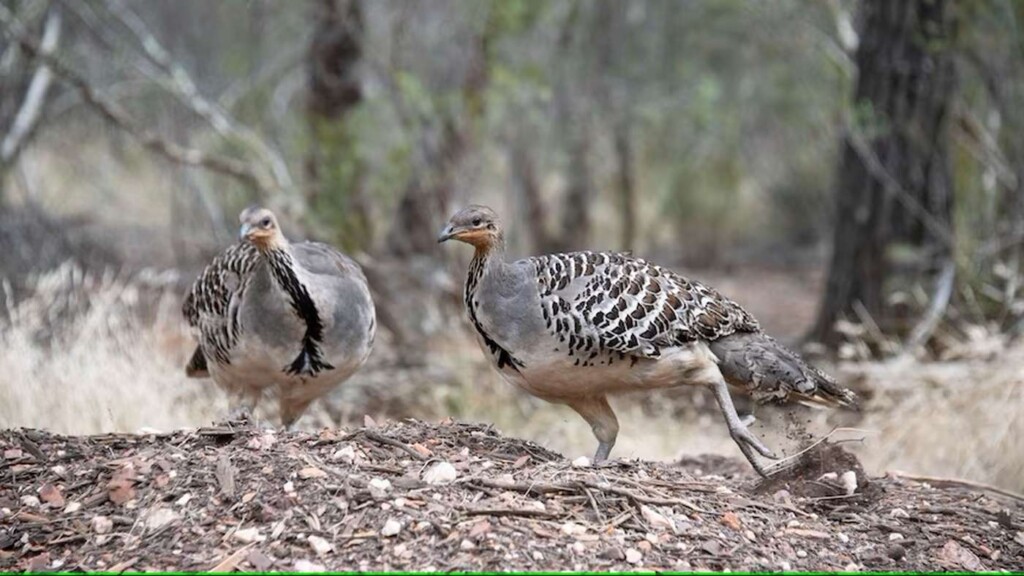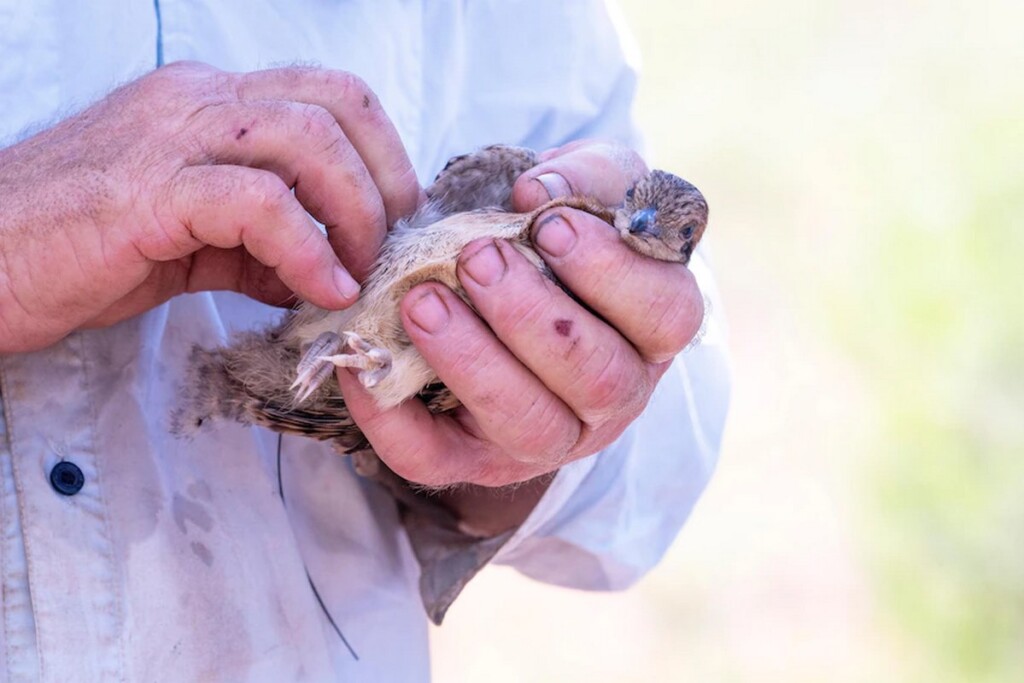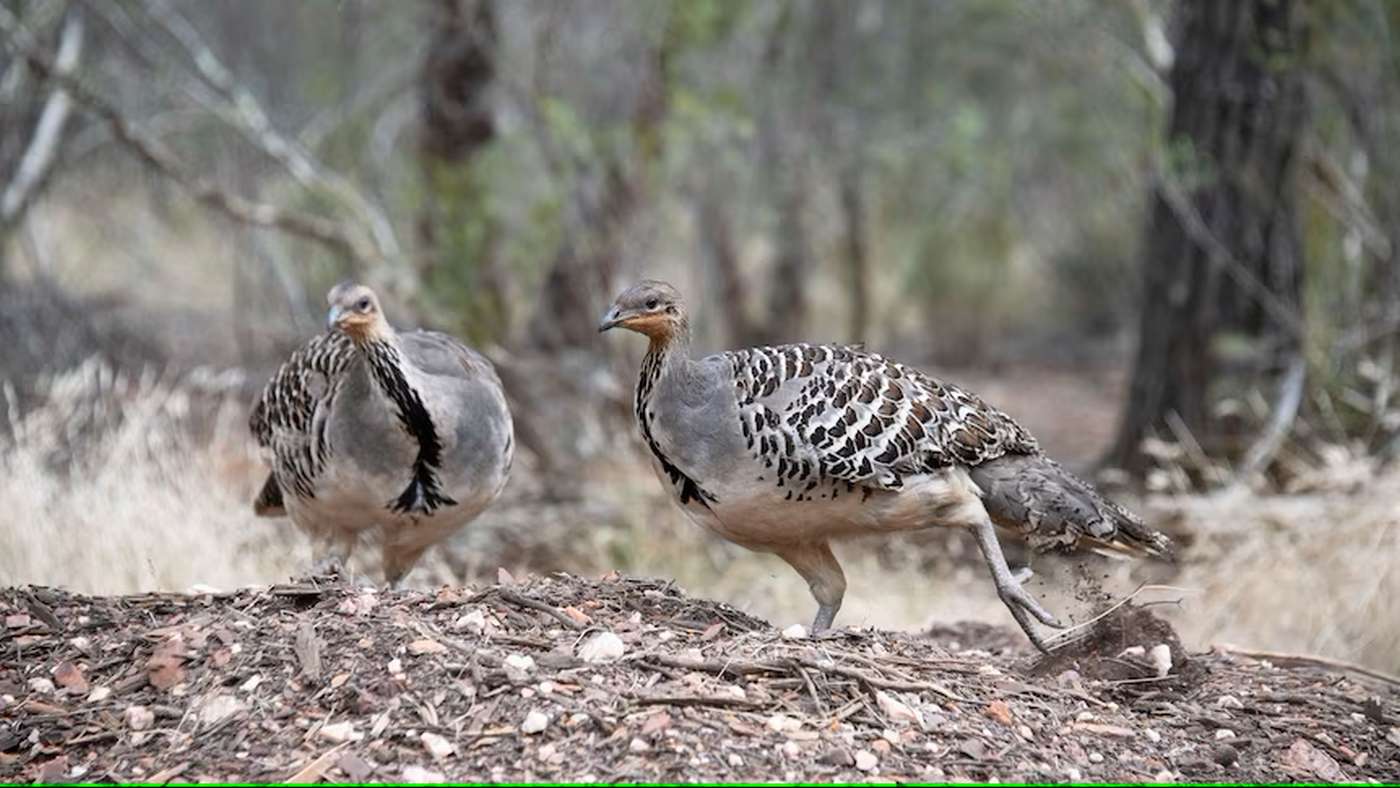
There are 25,000 Malleefowl left in Australia, but only 2,800 in the densely-populated state of New South Wales. But an unlikely group of heroes are stepping up to be the rescuers of these endangered birds: farmers.
Whatever natural balance existed in the ecosystem that these ground-nesting birds evolved into, the presence of feral cats and invasive foxes has greatly disrupted their survival and reproduction strategy, and the survival rate of Malleefowl chicks is less than 2% in the wild.
These interesting birds rely on intricate plumage for camouflage and are adept at staying hidden from all other creatures in their range. Malleefowl come from a family of Galliformes called “mound builders.”
In the winter, males select a spot of about 3 square yards typically in the shade of the mallee tree to build a nesting mound by raking sandy soil backwards with their feet. They will dig about 3 feet deep, and then spend the rest of the winter accumulating organic material around the depression until they have a mound that can be as tall as 2 feet.
For the past three years, farmers living and working in the Rankins Springs area, near West Wyalong have been collecting eggs from the birds’ nesting mounds and transferring them to a special incubation facility for release into a feral-free enclosed environment.
The initiative was organized by an Australian wildlife champion, Mal Carnegie, who founded the Lake Cowal Foundation to protect the unique ecosystem around that lake, and managed to squeeze an endowment from a nearby gold mining company to pay for it all.
Now working on behalf of the Malleefowl, he told ABC News AU that 10 juveniles have been spotted on cameras in the 140-acre (60-hectare) enclosure that they released about 12 months ago.
MORE GREAT AUSSIE CONSERVATION: Threatened Western Quolls Return to Western Australia After 100-Year Absence
“Once the chicks come out of the mound they are on their own, they are well adapted but obviously we have got predators like foxes and cats,” he said regarding the species’ low survival rate. “The average survival rate of chicks up to 12 months of age in the wild is very low, we are talking numbers up to 2%”

Through the catch, incubate, and release program, they’ve managed to increase the likelihood of reaching maturity tenfold.
Interestingly, before the farmers got involved in the species’ protection, this exact strategy had proven an unsuccessful one in the past.
MORE STORIES LIKE THIS: To Halt Ibis Extinction Austrian Man Shows Birds a New Migration Route With His UltraLight–And it’s Working
“They didn’t have a great deal of success but we have just put a bit of farmer logic into the whole process of incubation and releasing,” one farmer named Rodney Guest told ABC. He has spent the last 20 years clearing feral cats and foxes from his property all in order to help this bird.
“We have been picking up birds from the previous and current season, we are really over the moon with what we have achieved.”
SHARE These Interesting Birds And Their Heroic Farmer-Allies…




















